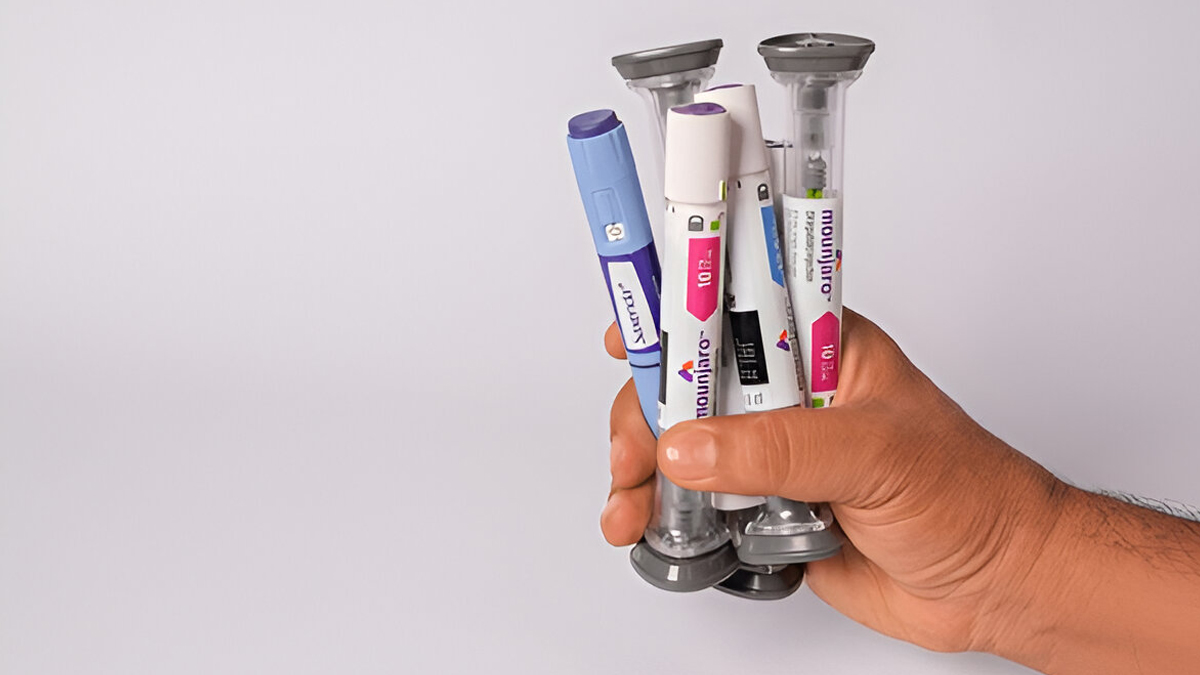
The conversation around weight loss is changing fast, especially in India. With the entry of injectable drugs like semaglutide and tirzepatide, people are asking if the era of restrictive dieting and exhausting workouts is finally over. These drugs originally developed to manage type 2 diabetes have become viral for another reason: significant, often rapid, weight loss.
Table of Content:-
However, as the buzz around these medications grows louder, it is vital to pause and ask: Is this truly a sustainable solution, or are we skipping crucial steps? We spoke to Dr Anju Ghei, MBBS, PGCRT, Head – Preventive Health and Weight Loss Expert, VLCC, Delhi, who explained the role of these weight loss drugs, their side effects, and things to keep in mind for the long-term.
How Do These Drugs Work?

Both semaglutide and tirzepatide are medications that mimic the action of the body's natural hormones GLP-1, or GLP-1 and GIP combined. These regulate hunger and blood sugar levels. By mimicking them, the drugs help slow down digestion, reduce hunger, and promote satiety, leading to a natural reduction in food intake. Over time, many users lose between 15-20% of their body weight," explained Dr Ghei. For people with obesity-related health risks, such as Polycystic Ovary Syndrome (PCOS), hypertension, or sleep apnoea, this can be a life-altering intervention. However, this only tells part of the story.
Also Read: Weight Loss Drug Users Report Developing Pancreatitis: Is There A Link?
Not a Shortcut, Not for Everyone
Despite their popularity, these injectables are not a one-size-fits-all fix. They are not cosmetic weight-loss tools; they are prescription medications that must be indicated medically.
Clinical studies and patient experience show that weight loss from these drugs often plateaus and rebounds once the medication is stopped. That’s particularly true in cases where there is no lifestyle correction or aftercare to support the transformation.
"In addition, side effects, such as nausea, bloating, digestive issues, and loss of muscle mass, are common. Rapid fat loss without parallel support can also result in sagging skin, hormonal fluctuations and nutrient depletion," added Dr Ghei. One of the side effects of GLP-1 drugs is a condition referred to as 'Ozempic face,' which causes wrinkling and sagging of facial skin. When weight reduction occurs at a more moderate rate, these consequences might be less noticeable. But the fast weight loss of GLP-1 drugs tends to exaggerate these facial changes, according to Harvard Health Publishing.
The hidden cost of speed

Rapid transformation may seem appealing, but it doesn’t always mean better health. If weight loss isn't supported by clinical diagnostics, nutritional nourishment, muscle maintenance, or mental balance, the outcome can be an imbalanced system, not a healthy body.
"For instance, patients can suffer from fatigue, mood swings, or aggravation of underlying gut or hormonal imbalance. Hence, medical supervision and proper eligibility screening are non-negotiable," advised Dr Ghei.
A Smarter Approach: Integrating Wellness With Medical Tools
There is no denying the effectiveness of GLP-1 drugs for the right individual, especially those with chronic metabolic conditions. However, to ensure long-term benefit, these medications must be used as part of a broader clinical wellness plan. This means combining them with:
- Nutritional planning based on whole foods
- Personalised exercise programs that maintain lean mass
- Therapies to aid skin tightening and metabolic healing
- Mental wellness tools to treat emotional triggers
- Ongoing diagnostics to track health markers
It's not until all these components come together that the transformation is not only noticeable, but sustainable.
Bottomline
Dr Ghei concluded, "GLP-1 and GIP-based injectables should be seen as a starting point, not a solution in themselves and that too only under expert supervision and in the right context. Long-term weight loss is not just about medication; it’s about building a foundation of health that lasts beyond any injection. So, before you follow a trend, talk to your doctor, understand your risks, and ask what kind of transformation is truly right for you."
[Disclaimer: This article contains information provided by an expert and is for informational purposes only. Hence, we advise you to consult your professional if you are dealing with any health issue to avoid complications.]
Also watch this video
How we keep this article up to date:
We work with experts and keep a close eye on the latest in health and wellness. Whenever there is a new research or helpful information, we update our articles with accurate and useful advice.
Current Version